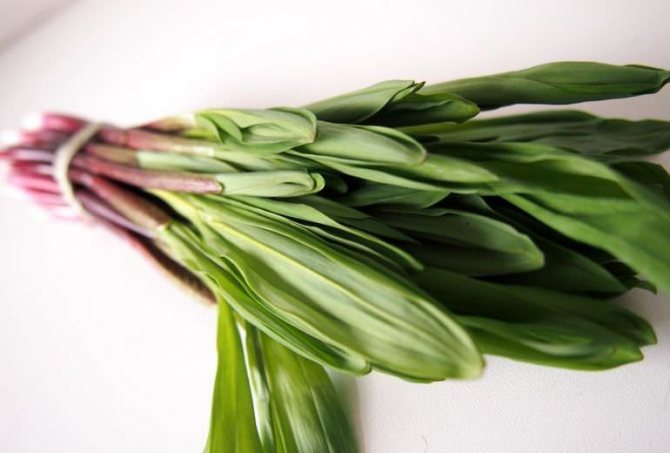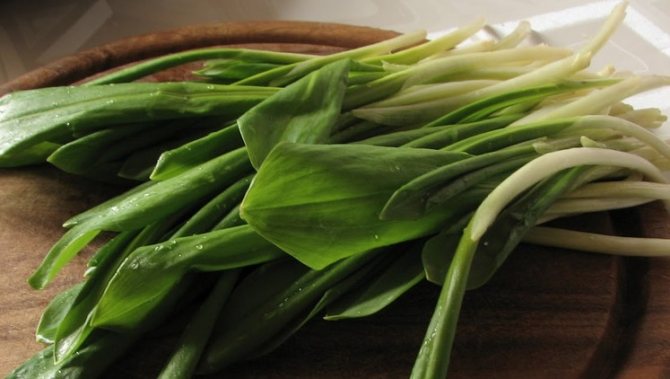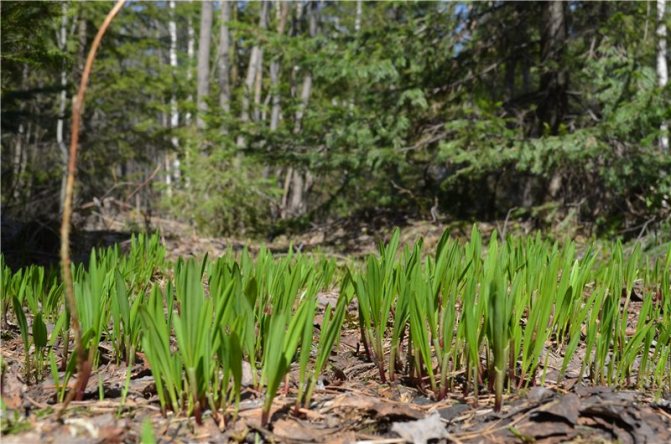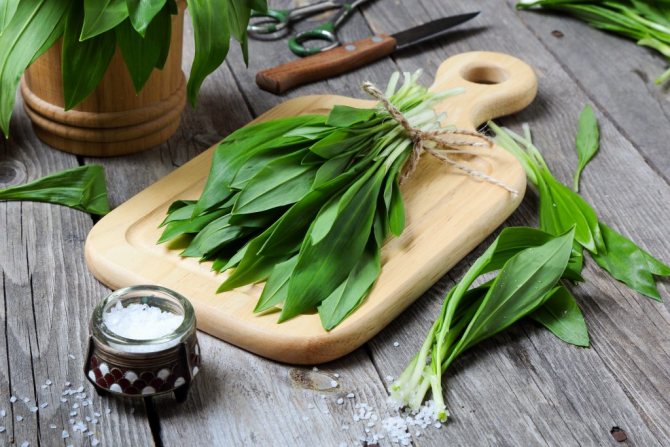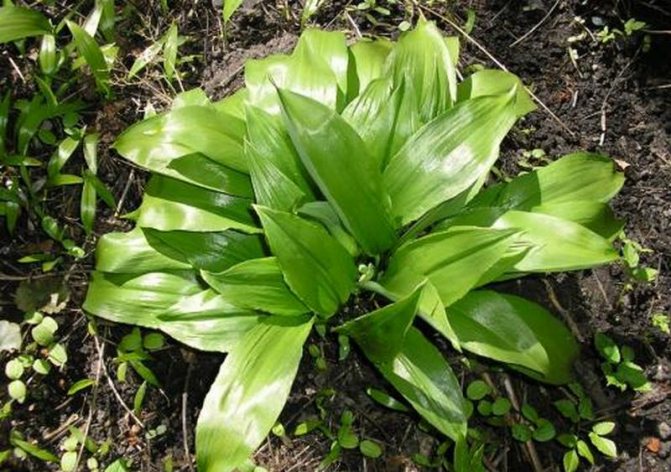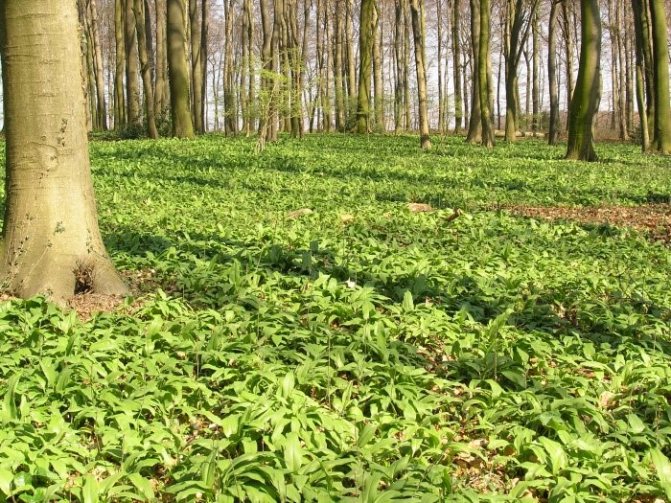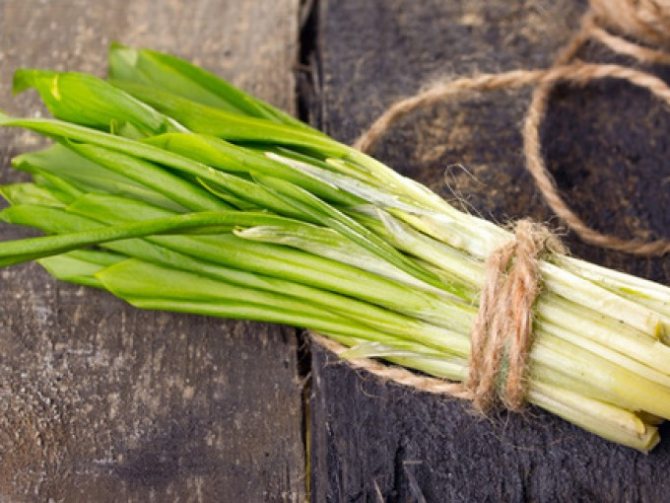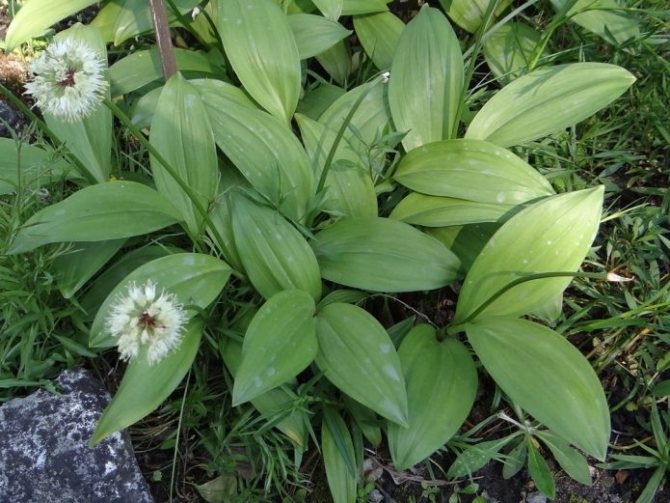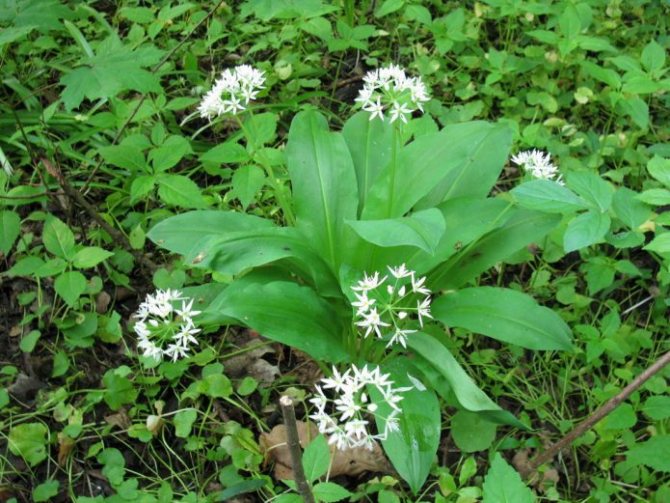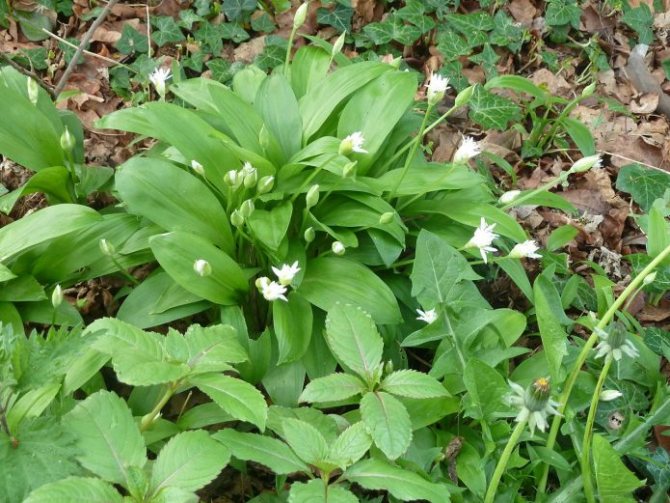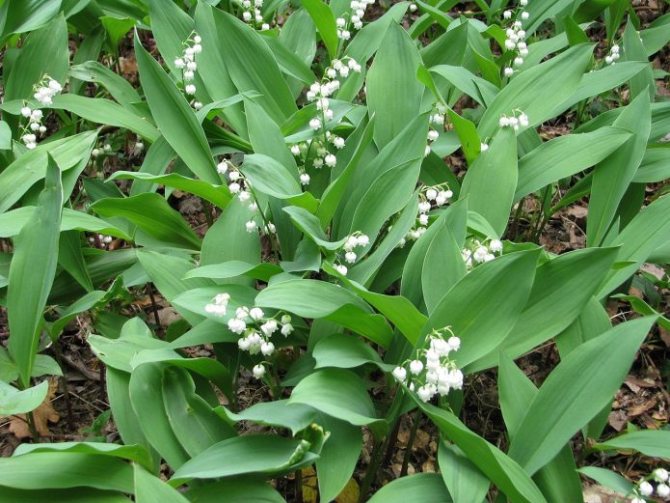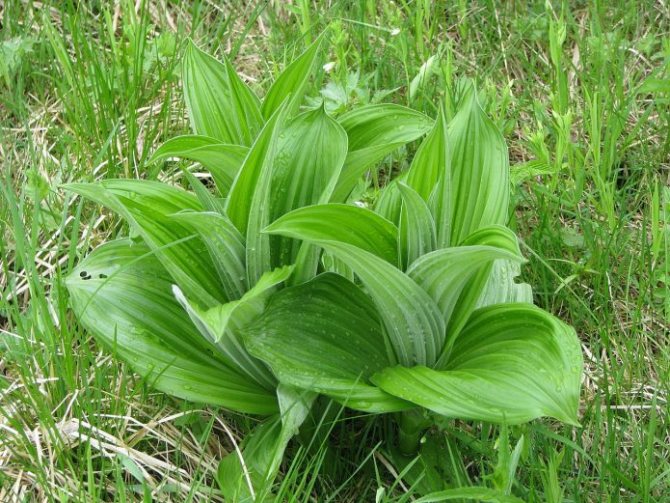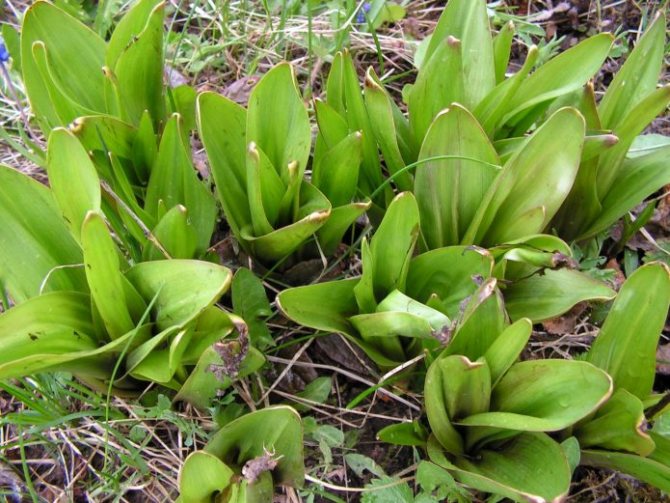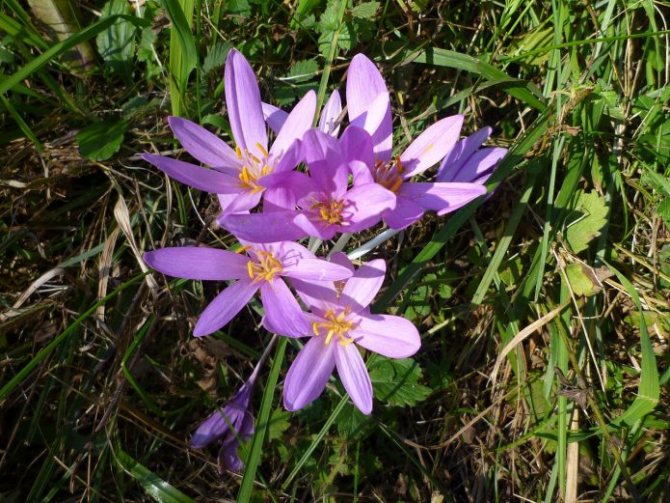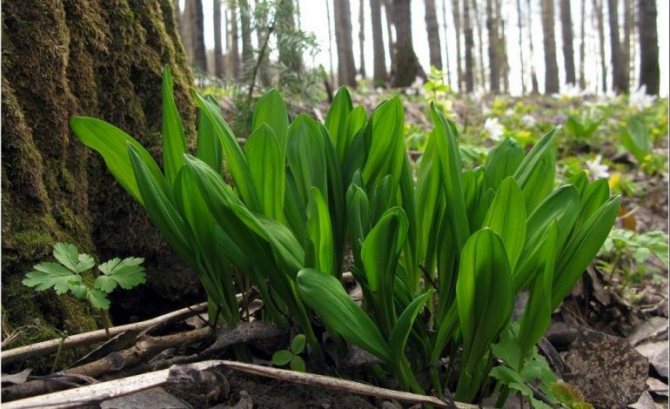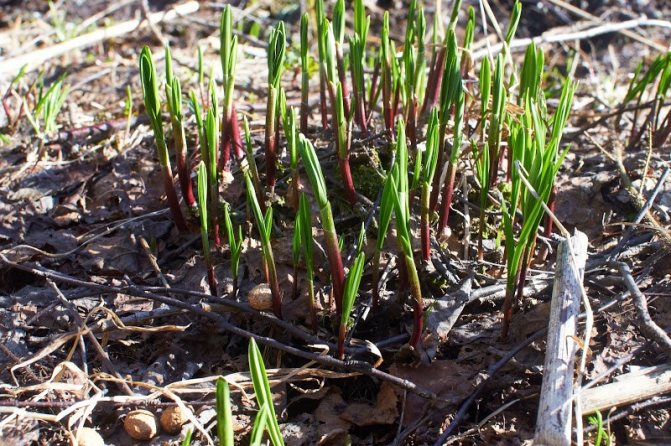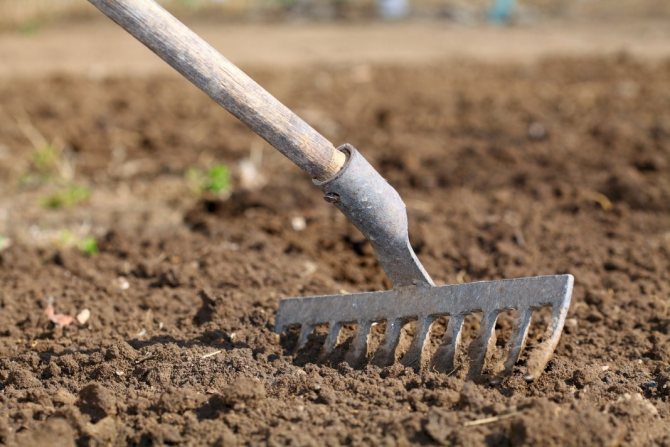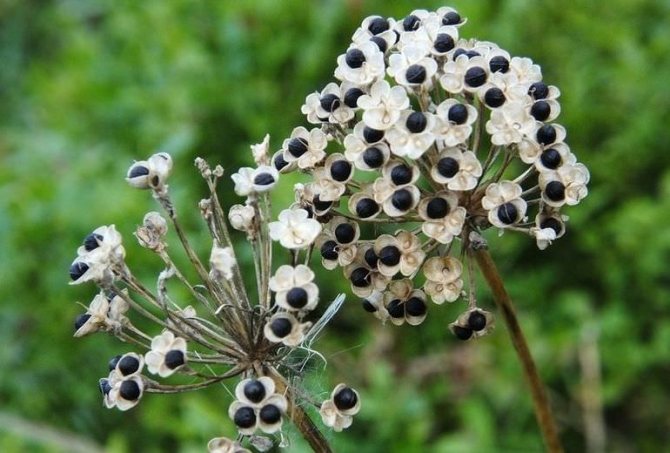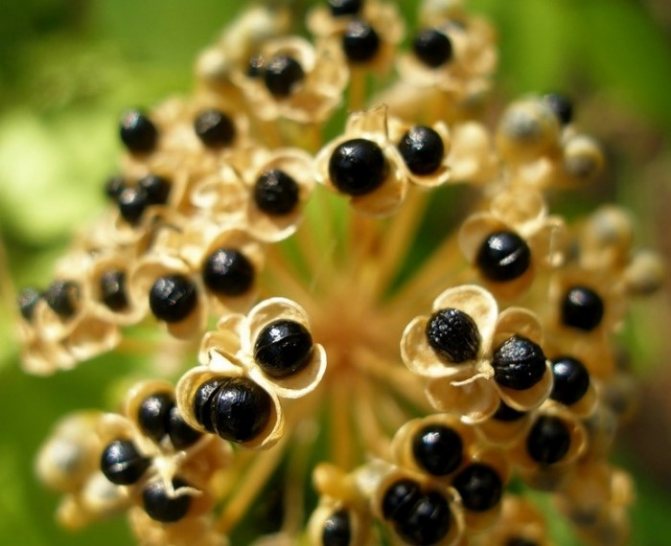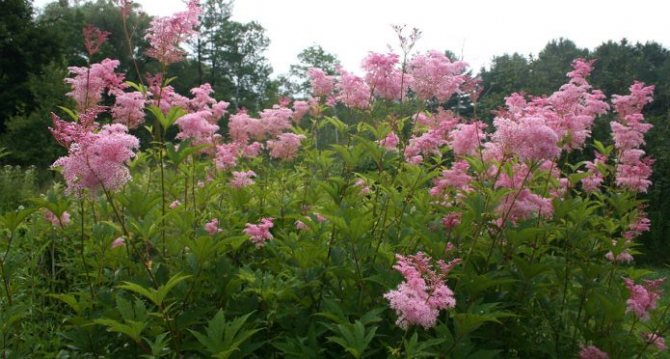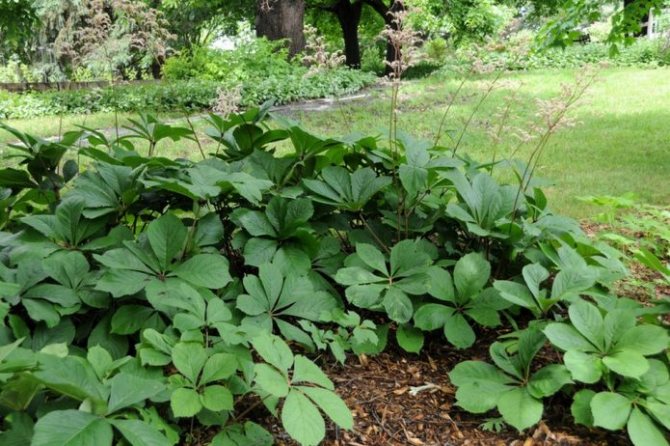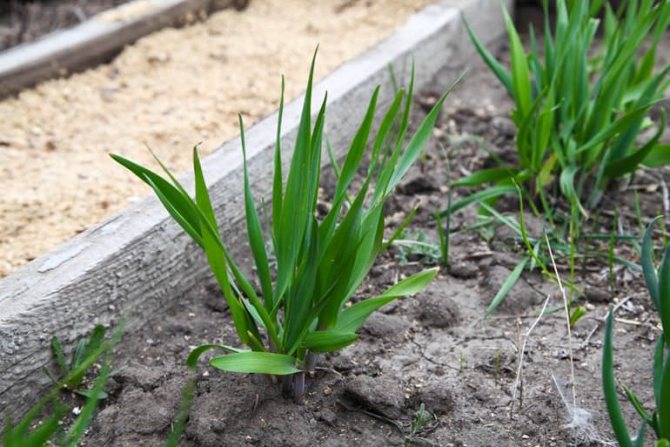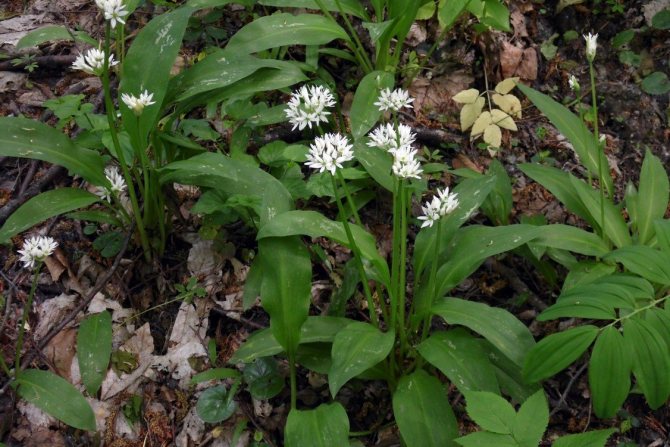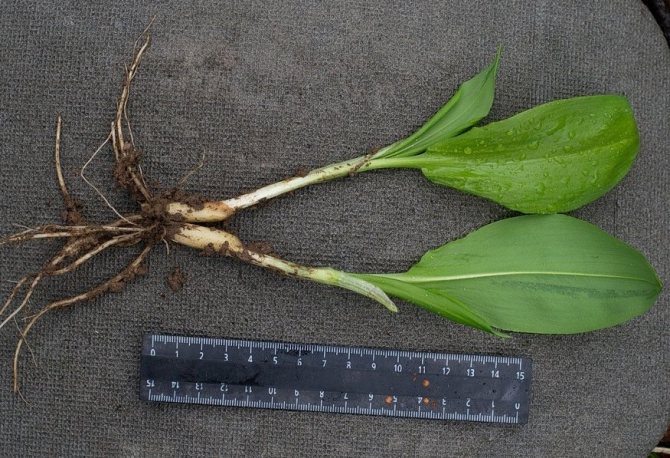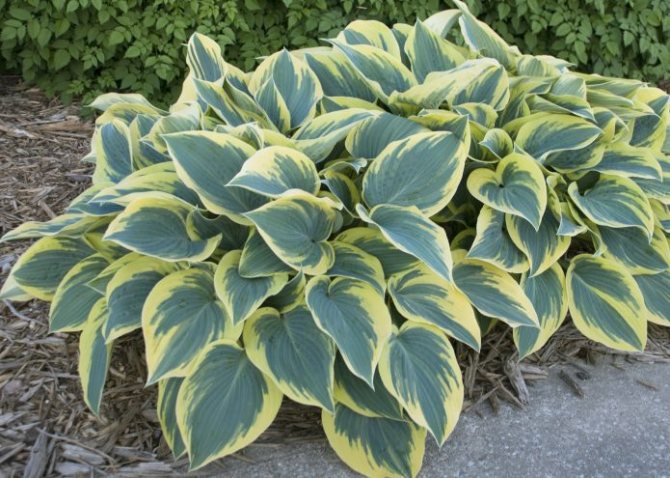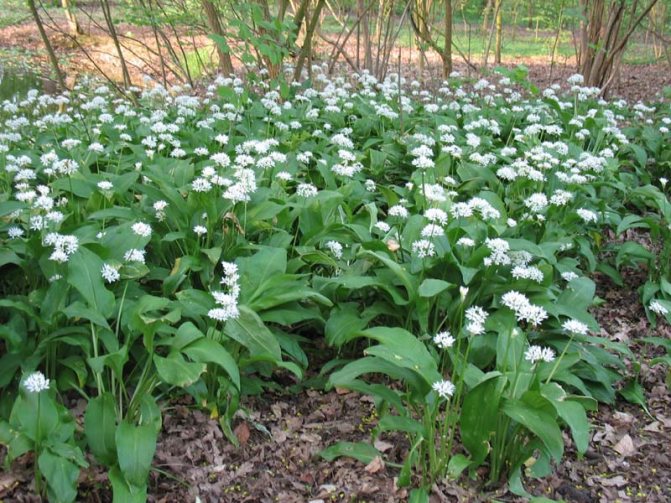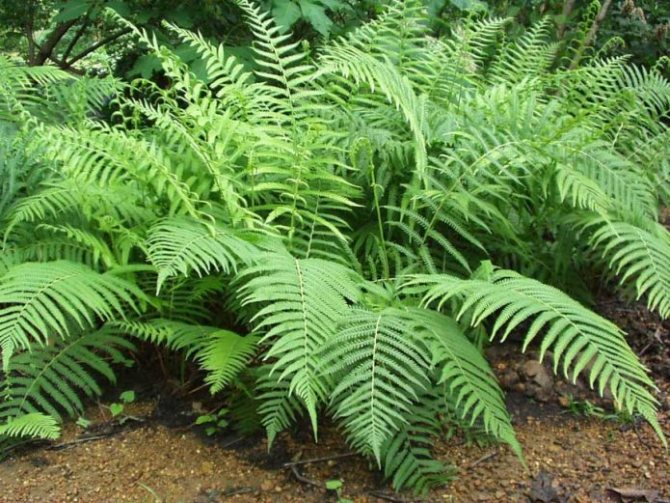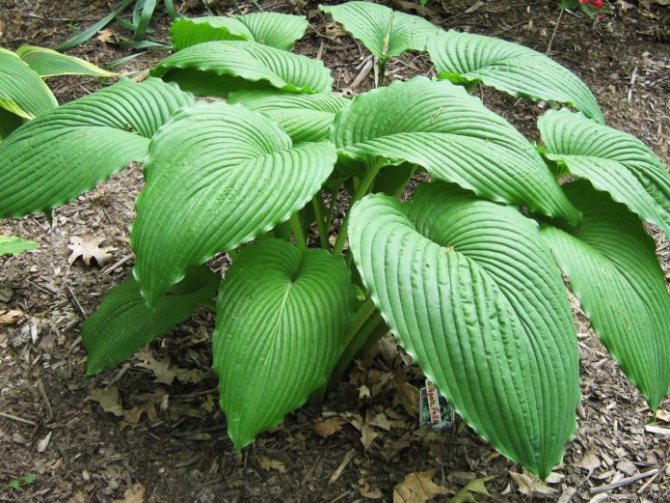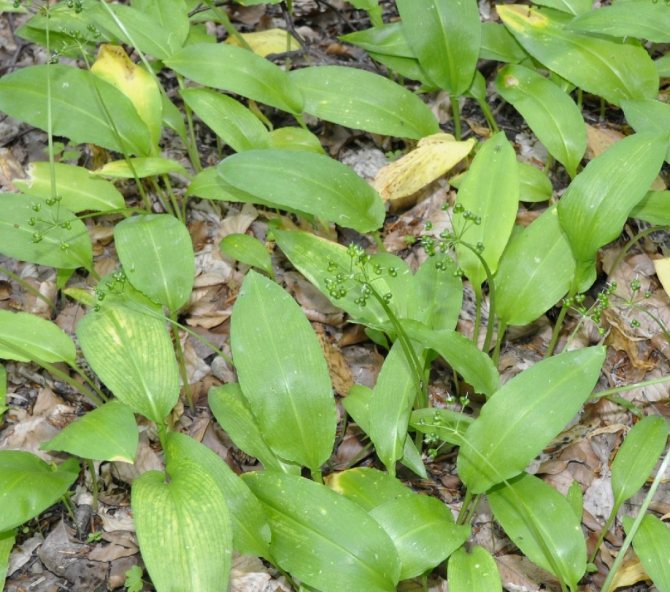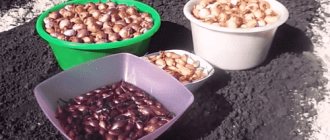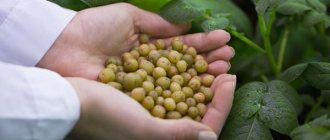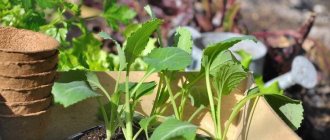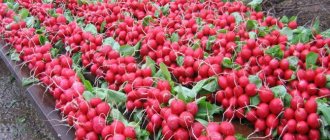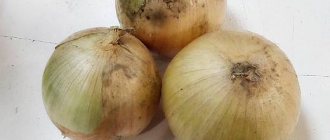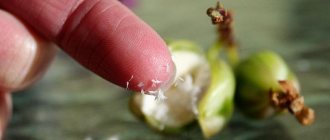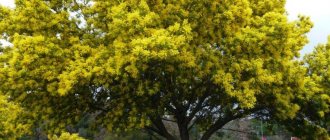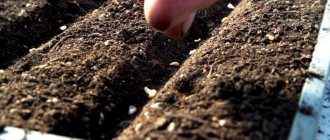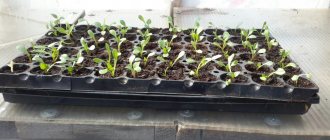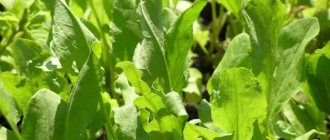Ramson from seeds at home is the best option for propagating a wild-growing vitamin species. There are 2 most common types of wild garlic onions with lily-of-the-valley-like leaves - bear and victorious. The first, with a peduncle up to 30 cm tall, with a white corolla, grows in the forests of the Caucasus, Siberia and Europe, develops before the beginning of summer, like most bulbous. The second species is found in Siberia and the Caucasus, larger, with greenish flowers, vegetates all summer. Both plants are included in the Red Data Book of separate regions, propagated by seeds.
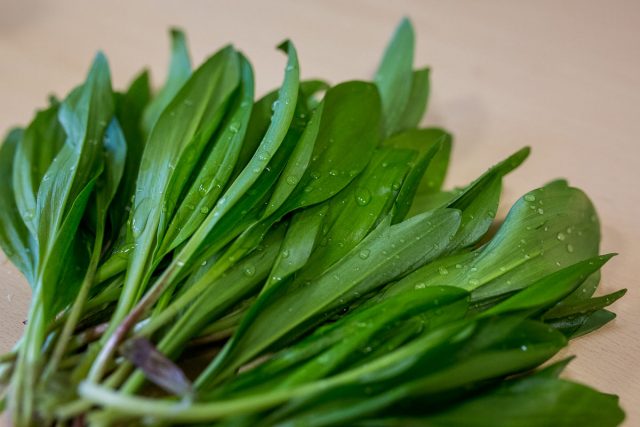
Useful properties of wild garlic
After all, wild garlic, or as it is also called wild onion, bear onion, victory onion, is a very useful plant. It is ahead of crops such as green onions and garlic in terms of vitamin C content. The use of wild garlic is that it is a natural antioxidant, activates the immune system, due to the presence of allicin in wild garlic. Wild onion is used to treat intestinal infections and scurvy, it has antihelminthic, bactericidal properties, helps in the treatment of cough and bronchitis. Due to its vitamin composition, wild garlic strengthens the walls of blood vessels, prevents the accumulation of cholesterol in the blood, stimulates digestion and cardiac activity. It can be used in food both raw and fermented, pickled, salted, added as a filling to flour products.
Ramson grows freely in the forest, but since it is listed in the Red Book, it is strictly forbidden to collect it, but you can grow it on your site. And for those gardeners who have not yet acquired this useful plant, I will tell you in what ways it can be diluted in their area.
It has been 12 years since I first became eager to tame a forest savage. She dug two dozen wild garlic plants in the forest along with the bulbs and planted them in the garden. Each and every one took root and in the first year formed decorative thickets decorated with white flowers.
Benefit
Ramson has been used for medicinal purposes for a long time:
- It increases appetite, helps the digestive tract, relieves gastritis and colitis;
- Wild onions are recommended to be included in the diet with an increase in blood pressure, diseases of the thyroid gland, blood vessels, respiratory organs, heart diseases, oncology, obesity and scurvy;
- Ramson has a diaphoretic and diuretic effect, works as an anti-inflammatory and antimicrobial agent, strengthens the immune system;
- Bear onions cleanse the body of toxins and toxins.
The unpretentious plant of wild garlic is well deserved to grow in the country. She will like the house in the winter, as the wild onion does not intimidate a window sill with a lack of lighting, and it does not need a backlight. Home conditions will suit him perfectly. If you do not find wild onion seeds in your city, you can order them on the website of companies that send seedlings and seeds. The post office works well these days, and the order will be delivered quickly.
Agricultural technology of wild garlic


When planting any plants, you need to try to create conditions as close as possible to natural ones. Ramson is quite unpretentious. For growing wild garlic, both sunny and dimly lit areas of the garden are well suited. It can take root everywhere, it was a real find for me.Ramson grows with pleasure where until that time nothing wanted to grow: in the shade, under a fence, under a tree. This year I want to conduct an experiment with planting in the shade under a nut, there I have not yet taken root at all.
If you plant wild onions in a good sunny location, you will have to remove the weeds, water the plant and plant it much more often. Also, the leaves will become finer and coarser. Seeds should be planted at a temperature of 18-20 degrees, it is then that their germination is greatest. At lower temperatures, germination drops significantly.
How wild garlic reproduces, varieties
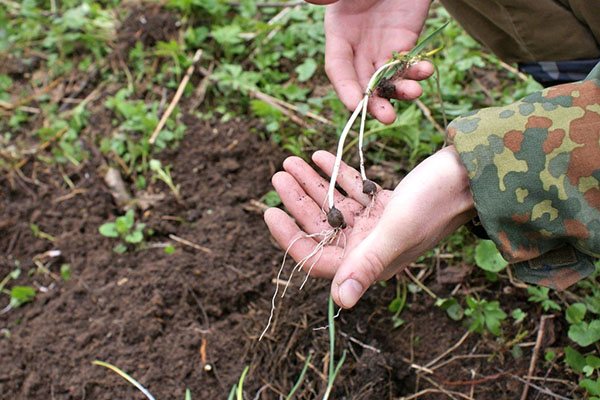

Under natural conditions, bear onions are propagated by bulbs and seeds, which ripen in August. For several years, a whole field of wild garlic develops from 5-6 bulbs. Aggressive collection of herbs greatly weakens the bulbs, which degenerate after 2-3 years.
To preserve the natural glades of this plant, the leaves are collected selectively, cutting 1-2 from one plant with scissors. Do not touch the bulbs. They do the same when growing greenery in their summer cottage.
How to grow wild garlic in the garden? For this, both bulbs and seeds are used. In the first case, you can get greens in a year, in the second - in 2-3 years. When buying seeds, pay attention to the timing. Wild garlic seeds lose their germination after a year. There are 2 types of wild garlic and several varieties. Views:
Ramson: growing from seeds
It is better to propagate plants vegetatively, with bulbs. But if you cannot get the planting material, then you will have to sow with seeds. Preparation for planting seeds must be done in advance. They can be purchased from a flower shop or harvested from the plant itself at maturity. When buying seeds, you should pay attention to the fact that they are round and smooth. If they are shriveled, then the germination percentage will be low.
Here it is necessary to take into account the little subtleties. In nature, wild garlic seeds ripen very early, in July. They crumble and lie without sprouting until next spring. Therefore, our seeds can be sown in September. It is necessary to dig shallow grooves (about 1 cm), fill the seeds there at a sufficient distance from each other (about 10-15 cm). The distance between the rows should be about 20 cm. Then the seeds are buried in the ground, and sprinkled on top with a thin layer of peat, humus or leaves.
In April, some of the seeds will give the first shoots. Some die from self-digestion (autolysis), so you should not count on one hundred percent germination
To obtain many germinable seeds, they should be harvested when they are ripe but not crumbled. For sowing, the freshest seeds should be used, in which the seed coat did not have time to harden, but it hardens very quickly.
Unripe seeds from green capsules, when they turn into a yellow-brown color, have a high germination capacity, but this is such a short time that if you are late for a day, the seeds spill out on the ground. Actually, this is why a large amount of self-seeding is formed, and the purchased seeds do not want to germinate for a long time and stubbornly. It is better to sow in a pot, which is then dug into the garden bed. This avoids tedious and lengthy weed control and the risk of losing crops. Seedlings will appear next spring. They will be small and dead.
During dormancy and stratification, many seeds die from autolysis (self-digestion). Death increases in warm weather to 72% of the total. So you should not count on one hundred percent germination. The resulting seedlings must be cut into a well-fertilized and weed-free bed. After a year or two, the plants are planted in a permanent place. I usually do this in the spring, when the plants are clearly visible and there is no risk of chopping the bulbs with a shovel when digging.
Wild Onion Care
The main care for wild garlic is watering during the dry season and weed control. In early spring, apply nitrogen fertilizer for active growth of greenery.During the flowering period, you need to feed the plantings with a full complex fertilizer for the development of the bulbs. When the leaves begin to wither, the care of the bed can be considered complete, the plants do not need any watering or nutrients.
In the summer, carefully inspect the garden. Each year, the bulbs rise slightly to the surface of the soil. Mulch the whole earth with a thick layer of leaves, so the plants will feel like in their native environment. If the winters in your area are frosty and with little snow, cover the garden with straw before frost. In the spring, the shelter must be removed.
For the first 2 years, do not tear the young leaves, let the plant develop and gain strength. If at this time the onion releases a flower arrow, break it off so that the plant has more energy for the development of the bulbs. If you are growing wild garlic from seed, when the plants mature, remove the weak specimens so that the strong bushes have room.
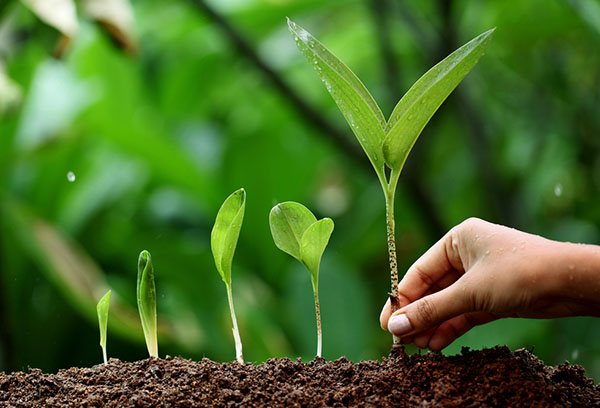

Ramson: Bulb cultivation
My first experiments showed that it is better to propagate wild garlic with bulbs. They can be planted in August-October or the next year in April-May. The main disadvantage of the vegetative method is a low reproduction rate: each shoot forms only one replacement bulb annually. With this method, the leaves are harvested in the third year of plant life.
It is better that the bulbs for transplanting should be with a ready-made root system. If the roots have dried up, the probability of survival is close to zero; in the spring, the roots do not grow. We plant the bulb so that 2/3 is in the ground, carefully add the roots and spill it abundantly so that there are no voids left. In the spring, before flowering, we often water it, periodically it is possible with fertilizer.
In the first year after transplanting, the plant will only grow to half of its normal size due to the unavailability of the root system. Whether the bulb has taken root can only be judged in autumn - a new replacement bulb should form in September-October.
When choosing a planting density, you need to remember that the horizontal roots of wild garlic grow up to 20 cm, this does not mean that you need to plant the bulbs strictly one at a time. When there are up to 20 bulbs in a curtain, they can not be seated, they do not crush each other, and the distance between the curtains should be 40-50 cm.
In the first year after transplanting, the plant will only grow to half of its normal size due to the unavailability of the root system. Whether the bulb has taken root can only be judged in autumn - a new replacement bulb should form in September-October.
When choosing a planting density, you need to remember that the horizontal roots of wild garlic grow up to 20 cm, this does not mean that you need to plant the bulbs strictly one at a time. When there are up to 20 bulbs in a curtain, they can not be seated, they do not crush each other, and the distance between the curtains should be 40-50 cm.
Harvesting
Ramson grows very slowly. Only one replacement bulb is produced per year (maximum two). Harvesting correctly means not cutting off all the greens. One or two remaining leaves will help the plant recover faster. A large amount of planting material will allow you to make several beds. In this case, wild garlic is harvested only from one bed, and on the second, they give time to the wild onions to recover and gain strength. After 5 years, the plants need to be planted.
In spring (April-May) leaves and arrows of wild garlic are cut for salads. You can dig up and pickle the onions or eat them fresh. There are several ways to preserve wild garlic for the winter:
- Drying and freezing. Greens are washed and dried in the open air. You can chop or leave the plant intact. It is scattered on a tray and taken out into a ventilated room. Periodically stir up the greens;
- You can use an oven for drying. The temperature is set at 40 degrees and the door is slightly opened. A properly dried plant breaks easily;
- When freezing, the leaves and stems are washed, cut into small pieces and placed in plastic containers with resealable lids. Put away in freezers;
- Salting also helps preserve the aroma and taste of wild garlic. Chopped greens, mixed with salt and packed in containers. Store in a cellar or refrigerator;
- Pickled wild garlic is very tasty. Plants are placed in jars and the marinade is prepared. For 1 liter of water, take 2 tablespoons of sugar and salt, boil, add 100 g of vinegar 9%, pour the jars, sterilize for 5 minutes and close;
- You can keep fresh herbs in the refrigerator for no more than 7 days.
Soil preparation for wild garlic
The lighting should not be too bright; wild garlic grows best in partial shade. In such conditions, its leaves become softer, larger and tastier. If there is too much sunlight, then the leaves become coarse, and sometimes even dry out.
Ramsons require well-moistened soil, but constant flooding is best avoided. Bear onions especially do not like excessive moisture. In early spring, the plant does not tolerate stagnant moisture well.
The soil should be slightly acidic or neutral, loose. In acidic soil, wild garlic grows very poorly. But it can grow well in both sand and clay.
Where can you plant wild garlic in the garden
Ramson grows well in the garden in damp places, but without constant flooding. And spring floods are not afraid of it.
The soil for growing wild garlic is better suited neutral or slightly acidic. Although wild garlic can grow on any soil, even sand and clay.
The most "useless" places of your dacha can be assigned to wild garlic. Suitable for planting it is the north side of a fence or structure, a damp lowland, a place near a watering tap.
You can plant wild garlic under a tree or shrub. But sometimes it will be necessary to add earth there (remember that the wild garlic bulb rises every year). Only do not remove fallen leaves from the ground in autumn.
Is it possible to plant shade-loving wild garlic in the sun? Can. And at the beginning of the cultivation of wild garlic plantation, I would say - even necessary. If you plant wild garlic in a sunny place in your garden, it will also grow well: it will share more often, the seed productivity of plants will be much higher. Yes, you will need to plant wild garlic more often, water more often, and fight weeds more often. But you will have a lot of wild garlic planting material for setting up and expanding your plantation.
An excellent place for planting wild garlic is at the edge of the greenhouse. There is a lot of water and sun here, so wild garlic grows here large, juicy, and gives a lot of seeds.
Watering and feeding wild garlic
Since wild garlic can be grown in the same place for a long time, a good organic dressing is required. Best of all, if it is humus from leaves of hazel, elm or birch, in the amount of 1 - 2 buckets per 1 sq. m. The soil will turn out to be light, loose, and breathable. But first, it must be carefully cleaned of weeds and processed to a sufficient depth, based on the fact that the roots of a bear onion penetrate by 15 - 20 cm, in a victorious onion - by 30 - 40 cm. To grow wild garlic, acidic soils will have to be limed, bear the onion does not tolerate them, the victorious one puts up with weakly acidic ones. Success components:
- Do not forget about watering in drought, as long as the aerial part of the plants is preserved;
- Do not loosen the soil deeply, but add mulch from leaf humus, which will keep it loose and moist, and in addition, serve as an excellent fertilizer for wild garlic;
- If there is no humus, use infusions of organic fertilizers as top dressing (mullein 1:10, bird droppings 1:20), but not fresh manure;
- For the successful cultivation of wild garlic, it is important not to let the weeds grow. Nettle and wheatgrass are especially dangerous, the rhizomes of which can pierce the bulbs through and through.
How to care for wild garlic in the garden?
Wild onions require minimal maintenance, but you still need to keep an eye on the plantings! Firstly, the soil in which the seeds were introduced, and on which seedlings have already appeared, must be watered regularly. But, watering should be moderate, as the roots will simply rot in excessively wet soil. Plants need to be fed monthly with mineral fertilizers, and a couple of times a season you can apply organic fertilizers - humus, bird droppings.
It is important to regularly loosen the soil in the garden, as well as weed wild garlic. Weeds such as nettles and wheatgrass are very damaging to young crops. Therefore, the garden must be kept clean!
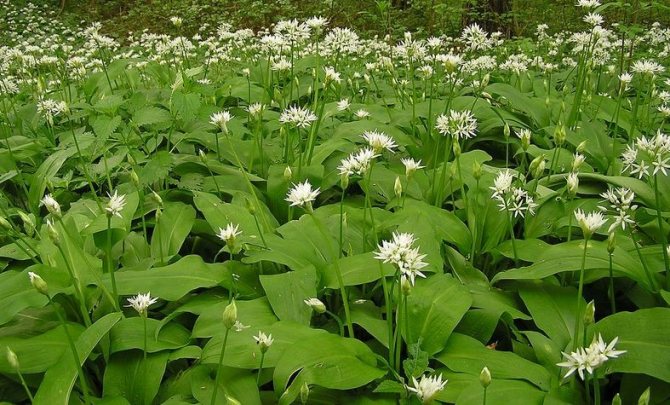

There should be no weeds in the wild garlic bed
As for insect pests, they do not bother the plant too much due to its spicy, strong smell. But, in hot summer on the leaves and stems of wild garlic, the larvae of the miner fly can start. They actively gnaw leaves, making whole tunnels in them, and after an attack of wild garlic larvae it becomes unsuitable for human consumption, therefore it is necessary to fight pests. This is easy to do - 50 grams of salt dissolves in a bucket of water, and the garden is watered with the resulting solution (along with plant leaves) before dark.
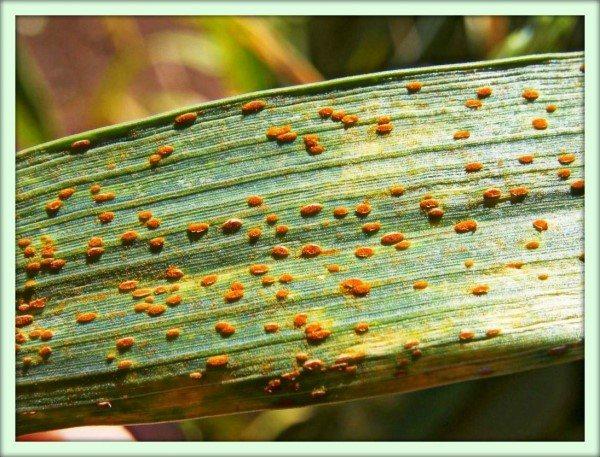

The manifestation of "rust" on the leaves
Another ailment that can affect wild garlic is "rust". It manifests itself as follows: brown "burns", light yellow or orange spots appear on the leaves. This disease can destroy all plantings, so you need to pluck and destroy the affected leaves as quickly as possible, and for treatment, spray the bushes with a mixture of shavings of household soap (2 tablespoons) and copper oxychloride (a tablespoon for ten liters of cold water).


Copper oxychloride
After the wild garlic finally takes root in a certain place for it, after two or three years, at the base, in place of one bulb, new "nests" will appear. At this moment, wild garlic must be planted, otherwise the root system will not cope with the load, the plant will grow, shrink, and then wither ahead of time. Every seven years, wild onion bushes should be carefully dug up and the bulbs should be moved to unplanned land, to a new location, otherwise the plant will gradually degenerate.
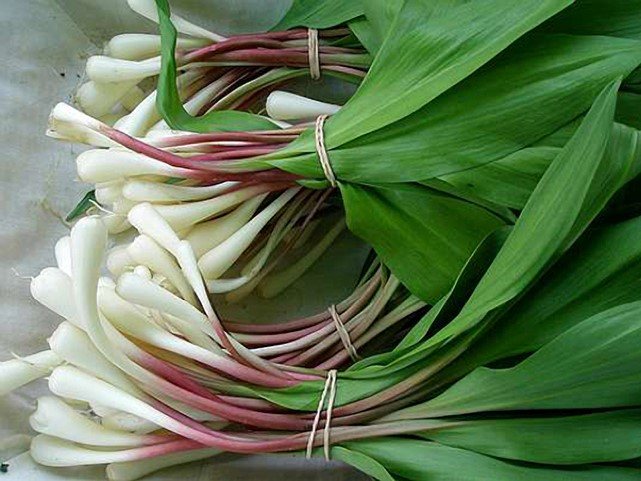

Three to four leaves grow from one bulb
Copper oxychloride prices
copper oxychloride
Protection from pests and diseases
Since wild garlic can be grown in the same place for a long time, a good organic dressing is required. Best of all, if it is humus from leaves of hazel, elm or birch, in the amount of 1 - 2 buckets per 1 sq. m. The soil will turn out to be light, loose, and breathable. But first, it must be carefully cleaned of weeds and processed to a sufficient depth, based on the fact that the roots of a bear onion penetrate by 15 - 20 cm, in a victorious onion - by 30 - 40 cm. To grow wild garlic, acidic soils will have to be limed, bear the onion does not tolerate them, the victorious one puts up with weakly acidic ones. Success components:
Features of planting seeds and bulbs
There are 2 ways to propagate wild garlic: sowing seeds and planting bulbs, and each method has its own characteristics. Planting seeds requires warm weather. The best germination is observed at a temperature of about + 20⁰. It is advisable to do this work in the spring or late summer. The fresher the seeds, the more viable they will be. Buy them before boarding and be sure to look at the packaging date. It is advisable to collect grains from existing plants immediately before planting.
To obtain seeds, cut the pods when they begin to turn yellow. If the shell has become hard, it means that the plant has passed into a state of dormancy, and the activity of the embryos has decreased.
If planting in September, make 1 cm deep furrows 20 cm apart. Seeds should not be sown often, the distance between plants should be at least 10 cm. Sprinkle with soil and a thin layer of black soil.There is no need to mulch yet, since the mulch layer should not be thinner than 5 cm. The seedlings will not be able to penetrate this thickness, they will not have enough light for development. You can cover the garden with foliage for the winter, but be sure to clear the ground in the spring. During the cold season, some grains will lose their germination and will not sprout, these places can be sown in spring. When planting is planned for May, it is necessary to stratify the seeds in winter. Keep grains at 0⁰ for 3 months. When warm days come, plant them just like in the fall.
Planting the bulbs is much easier, but only one plant will appear from each root, and not all of them will take root. This method is convenient if you decide to destroy the plantation in the country and arrange a garden bed in another place. You need to do this work in the second half of summer, when the plants have already plunged into hibernation. Make nests 30 cm apart, plant 2 roots in each hole. Do not bury the bulbs; the dry feathers should be visible from the ground. In the spring, pull out the weak bushes so that there is one copy in each hole.
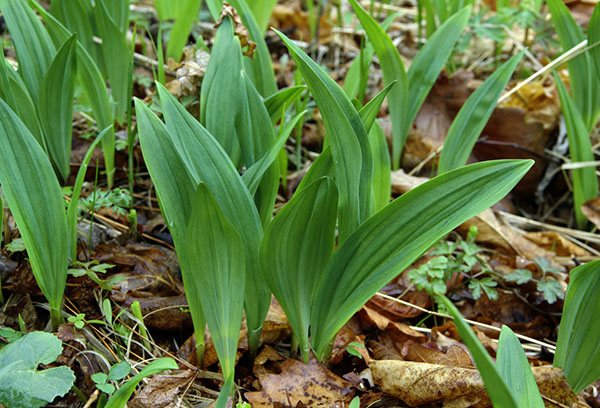

Description
The ramson or bear onion belongs to the genus Onions, subfamily Onions from the Amaryllis family. In nature, these perennial grasses propagate by seed or grow from daughter bulbs.
Two true leaves of a bear onion are oblong, lanceolate, smooth, and have long petioles. On a single triangular stem, 15 to 50 cm high, in late spring - early summer, an inflorescence appears in the form of a dense spherical umbrella with white or whitish-green small flowers. The fruit is a 3-sided capsule with almost round, small, black seeds. On an elongated white onion, 1 cm thick, 1-2 daughter ones are usually laid per season. Ramson is a late spring ephemeroid, therefore, by the middle of summer, the ground part turns yellow and dies, and the plant goes into a dormant period.
Bear onions grow in a mixed and broad-leaved forest zone, on shady edges and in the grass cover of meadows, in river valleys and on the banks of water bodies. It is widely distributed in Europe, Ukraine, Belarus, the Caucasus and Turkey. In Russia, in Eastern and Western Siberia, in the Far East and the Urals, other closely related, but more unpretentious and winter-hardy species grow, also called wild garlic - victory onion and wild garlic onion.
